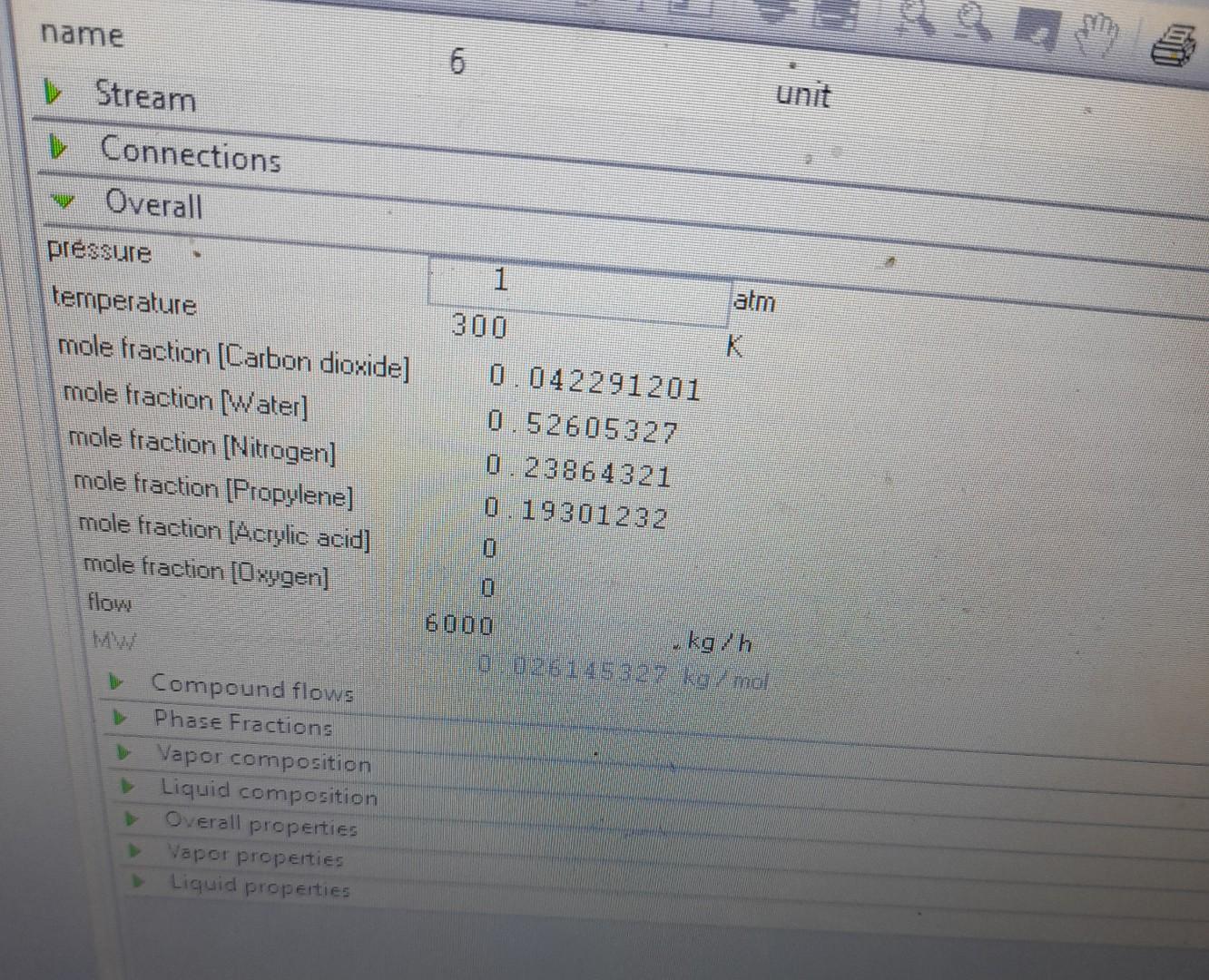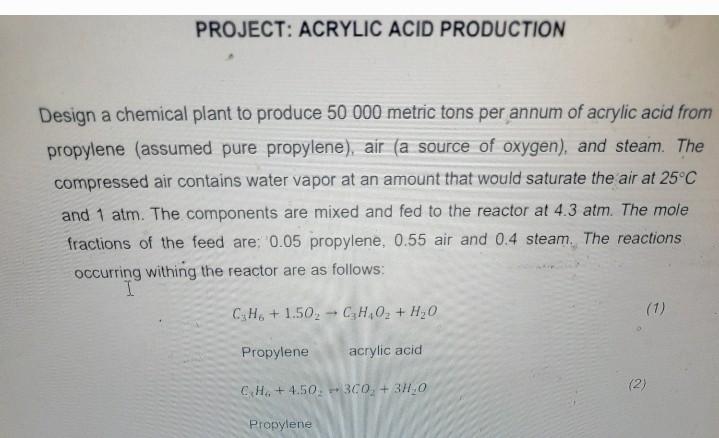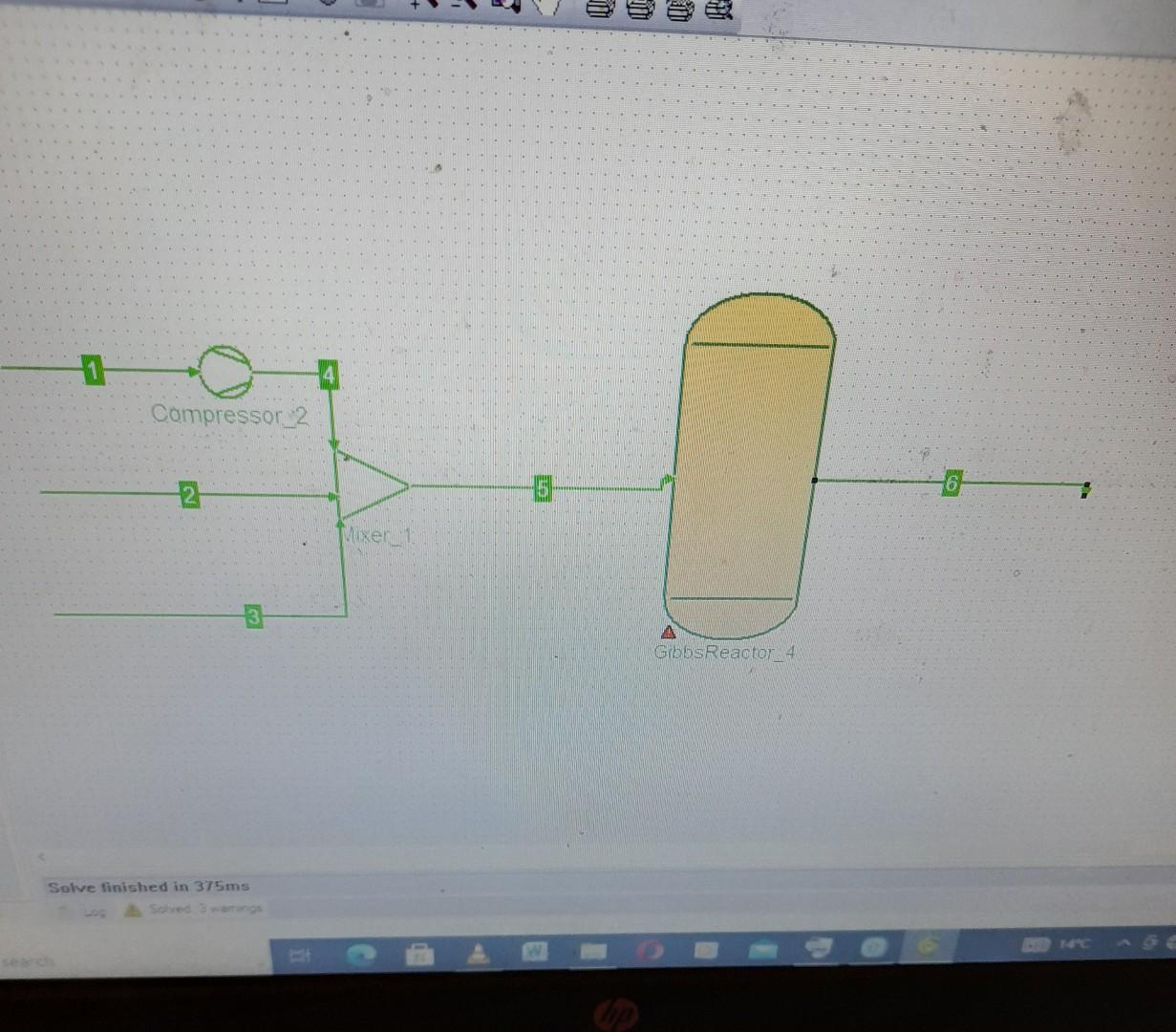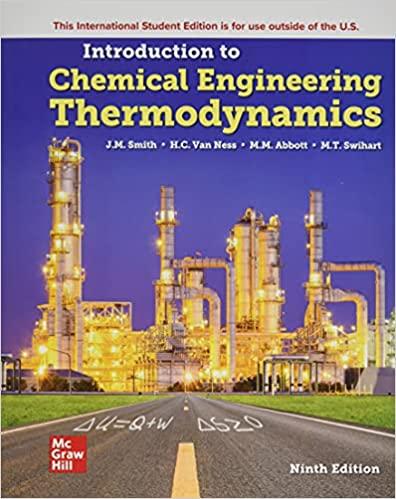Answered step by step
Verified Expert Solution
Question
1 Approved Answer
I'm doing a project in acrylic acid production. I'm designing using a COCO stimulation,everything was running well until i reach the reactor, my challenge is
I'm doing a project in acrylic acid production. I'm designing using a COCO stimulation,everything was running well until i reach the reactor, my challenge is that the stream leaving the reactor have zero moles of acrylic acid and thats my main product, I have assigned all my reaction to the reactor
please help with setting and adjacement so I can produce acrylic acid on the stream leaving the reactor
composition of stream living reactor



name 6 v Stream unit v Connections * Overall pressure \begin{tabular}{lr} temperature & \multicolumn{1}{|c}{300} \\ mole fraction [Carbon diokide] & 0.042291201 \end{tabular} \begin{tabular}{ll} mole fraction [Water] & 0.52605327 \\ mole fraction [Nitrogen] & 0.23864321 \\ mole fraction [Propylene] & 0.19301232 \\ \hline \end{tabular} - Phase Fractions - Vapor composition - Liquid composition - Overall properties - Vapor properties - Liquid properties Design a chemical plant to produce 50000 metric tons per annum of acrylic acid from propylene (assumed pure propylene), air (a source of oxygen), and steam. The compressed air contains water vapor at an amount that would saturate the air at 25C and 1atm. The components are mixed and fed to the reactor at 4.3atm. The mole fractions of the feed are: 0.05 propylene, 0.55 air and 0.4 steam. The reactions occurring withing the reactor are as follows: C3H6+1.5O2C3H4O2+H2O Propylene acrylic acid C3H6+4.5O23CO2+3H2O Solve finistred in 375ms
Step by Step Solution
There are 3 Steps involved in it
Step: 1

Get Instant Access to Expert-Tailored Solutions
See step-by-step solutions with expert insights and AI powered tools for academic success
Step: 2

Step: 3

Ace Your Homework with AI
Get the answers you need in no time with our AI-driven, step-by-step assistance
Get Started


